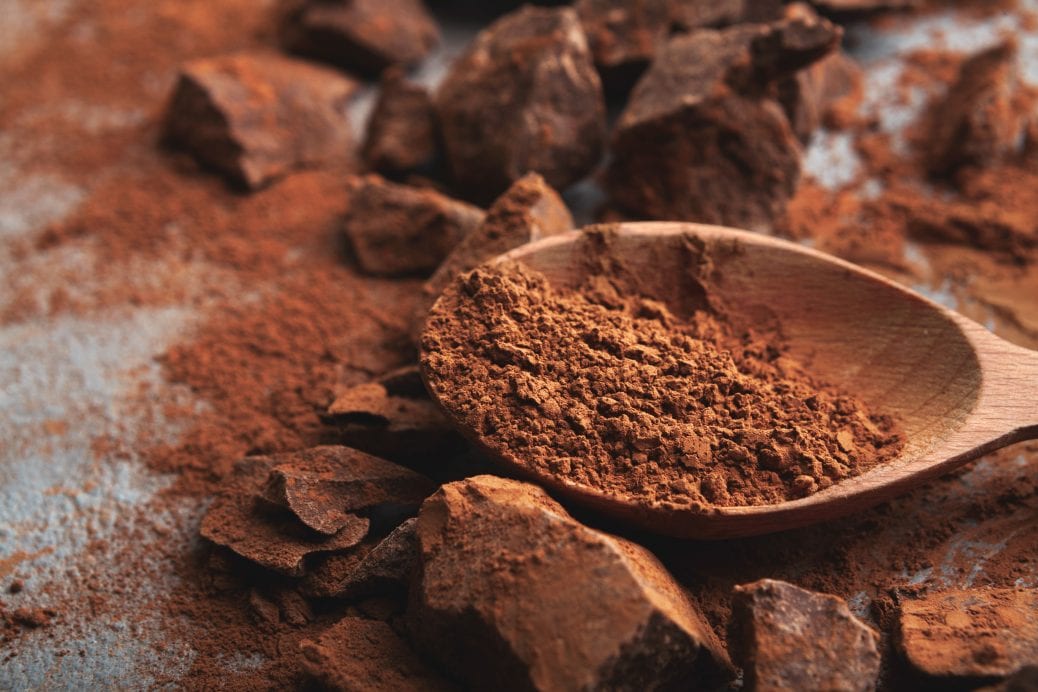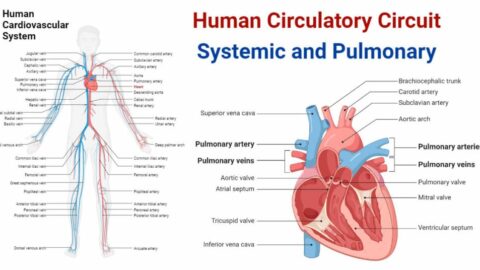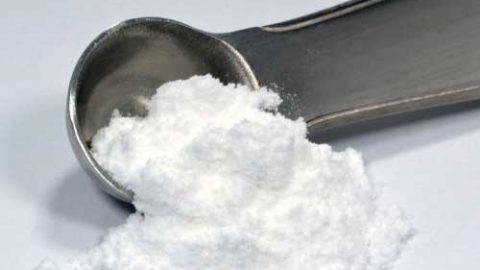As if there were not enough benefits to regularly ingesting a quality cocoa source, recent data suggests improvements in bodycomp. The good news is, this was a in-vivo randomized human study.(1) The “bad news” is it was done with a very specific group of humans: Postmenopausal women. For some odd reason this lab is very focused on the effects of cocoa on that specific population, but their findings may be applicable to other populations too. For example, a recent randomized, single-blind study (2) in athletically fit women found a significant increase (~9.6%) in resting energy expenditure (REE) levels when fed dark chocolate (70% cocoa content) for 30 days.
It should be noted it they did not find differences in energy expenditure or substrate utilization during exercise, but such an impact on REE could have positive effects on body competition over time. Of course if one wants to avoid the sugar and fat content of dark chocolate, using a quality cocoa product, as found in AlphaJoe, (linked below), will take care of that issue.
I’d file this one under “more data needed” but as there’s a long list of potential benefits to ingesting quality cocoa – hence why it’s one of the key ingredients in my AlphaJoe recipe – it’s nice to know this may be yet another benefit.
(1) Cocoa-rich chocolate and body composition in postmenopausal women: a randomised clinical trial.
Br J Nutr. 2020 Aug 4;1-9.
Abstract
During menopause, women undergo a series of physiological changes that include a redistribution of fat tissue. This study was designed to investigate the effect of adding 10 g of cocoa-rich chocolate to the habitual diet of postmenopausal women daily on body composition. We conducted a 6-month, two-arm randomised, controlled trial. Postmenopausal women (57·2 (sd 3·6) years, n 132) were recruited in primary care clinics.
Participants in the control group (CG) did not receive any intervention. Those of the intervention group (IG) received 10 g daily of 99 % cocoa chocolate in addition to their habitual diet for 6 months. This quantity comprises 247 kJ (59 kcal) and 65·4 mg of polyphenols. The primary outcomes were the between-group differences in body composition variables, measured by impendancemetry at the end of the study. The main effect of the intervention showed a favourable reduction in the IG with respect to the CG in body fat mass (-0·63 kg (95 % CI -1·15, -0·11), P = 0·019; Cohen’s d = -0·450) and body fat percentage (-0·79 % (95 % CI -1·31, -0·26), P = 0·004; Cohen’s d = -0·539). A non-significant decrease was also observed in BMI (-0·20 kg/m2 (95 % CI -0·44, 0·03), P = 0·092; Cohen’s d = -0·345). Both the body fat mass and the body fat percentage showed a decrease in the IG for the three body segments analysed (trunk, arms and legs).
Daily addition of 10 g of cocoa-rich chocolate to the habitual diet of postmenopausal women reduces their body fat mass and body fat percentage without modifying their weight.
(2) Dark Chocolate Supplementation Elevates Resting Energy Expenditure in Exercise Trained Females.
Int J Exerc Sci. 2021 Apr 1;14(2):250-259.
Abstract
Several recent reports have indicated positive health and exercise benefits of (-)-epicatechin-rich cocoa products. This study investigated the influence of dark chocolate (DC) supplementation on resting and steady state exercise metabolism in a group of athletically fit females.
Using a randomized, single-blind design, 18 exercise trained female subjects were assigned to a 30-d supplementation with either 20g · d-1 of 70% DC (n = 9) or a calorically matched white chocolate (WC) (n = 9). Pre-supplementation (PRE), subjects underwent indirect calorimetry assessment for resting energy expenditure (REE) and exercise energy expenditure (EEE) consisting of steady state cycling for 20 min, 10 min each at 50 W (EEE-50) and 100 W (EEE-100). Upon completion of the 30-d supplementation (POST), subjects repeated the assessment for REE, EEE-50, and EEE-100.
Post supplementation REE was significantly increased by ~9.6% in the DC group (Δ REE: DC 140 ± 132, WC -3 ± 92 kcal · d-1, p = .017). Post supplementation, neither EEE-50 (DC 4.51 ± 0.59, WC 4.51 ± 0.32 kcal · min-1) nor EEE-100 (DC 6.56 ± 0.60, WC 6.69 ± 0.42 kcal · min-1) were significantly different between groups (p ≥ .05).
There were no significant within or between group time effects for substrate utilization at rest or during EEE-50 or EEE-100 (p ≥ .05). To our knowledge this is the first study to demonstrate that a relatively small daily dosage of DC can significantly elevate REE. However, it does not impact steady state EEE or substrate utilization in a group of athletically fit females.
Addition Cocoa Studies of interest:
Cocoa-Rich Chocolate and Quality of Life in Postmenopausal Women: A Randomized Clinical Trial.
Will Brink is the owner of the Brinkzone Blog. Will has over 30 years experience as a respected author, columnist and consultant, to the supplement, fitness, bodybuilding, and weight loss industry and has been extensively published. Will graduated from Harvard University with a concentration in the natural sciences, and is a consultant to major supplement, dairy, and pharmaceutical companies.
His often ground breaking articles can be found in publications such as Lets Live, Muscle Media 2000, MuscleMag International, The Life Extension Magazine, Muscle n Fitness, Inside Karate, Exercise For Men Only, Body International, Power, Oxygen, Penthouse, Women’s World and The Townsend Letter For Doctors.
He’s also been published in peer reviewed journals.
Will is the author of the popular e-books, both accompanied by private members forum access , Bodybuilding Revealed & Fat Loss Revealed.
You can also buy Will’s other books on Amazon, Apple iBook, and Barnes and Noble.







great mr. bill brink, love it, & have a merry christmass & a verry healthy new year.
Thanks for this. For those of us who ARE premenopausal women, it’s a great study to know about!
Oops, meant to say post-menopausal!
~1.3 lbs./6 months, a difference of about 3.5 ounces of weight per month, and 0.79% decrease in BF%..
Don’t seem highly significant numbers